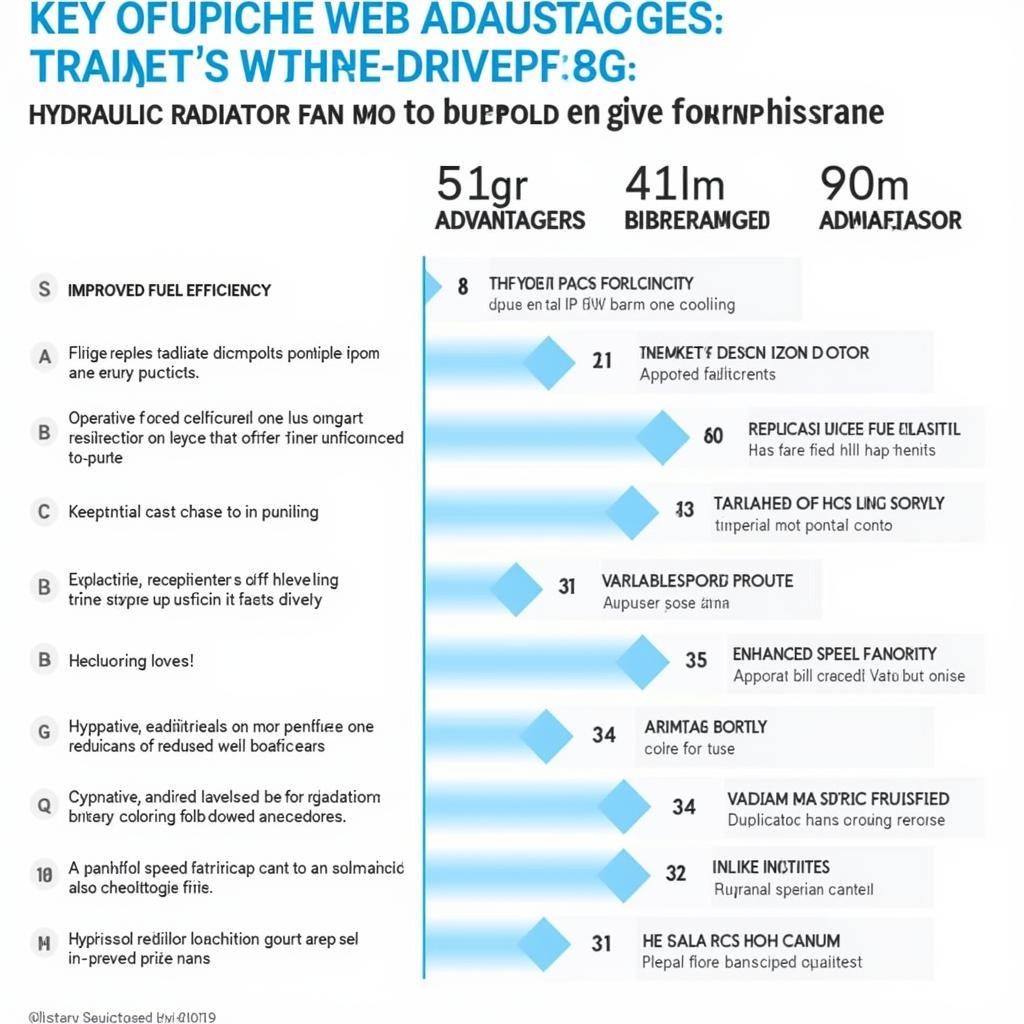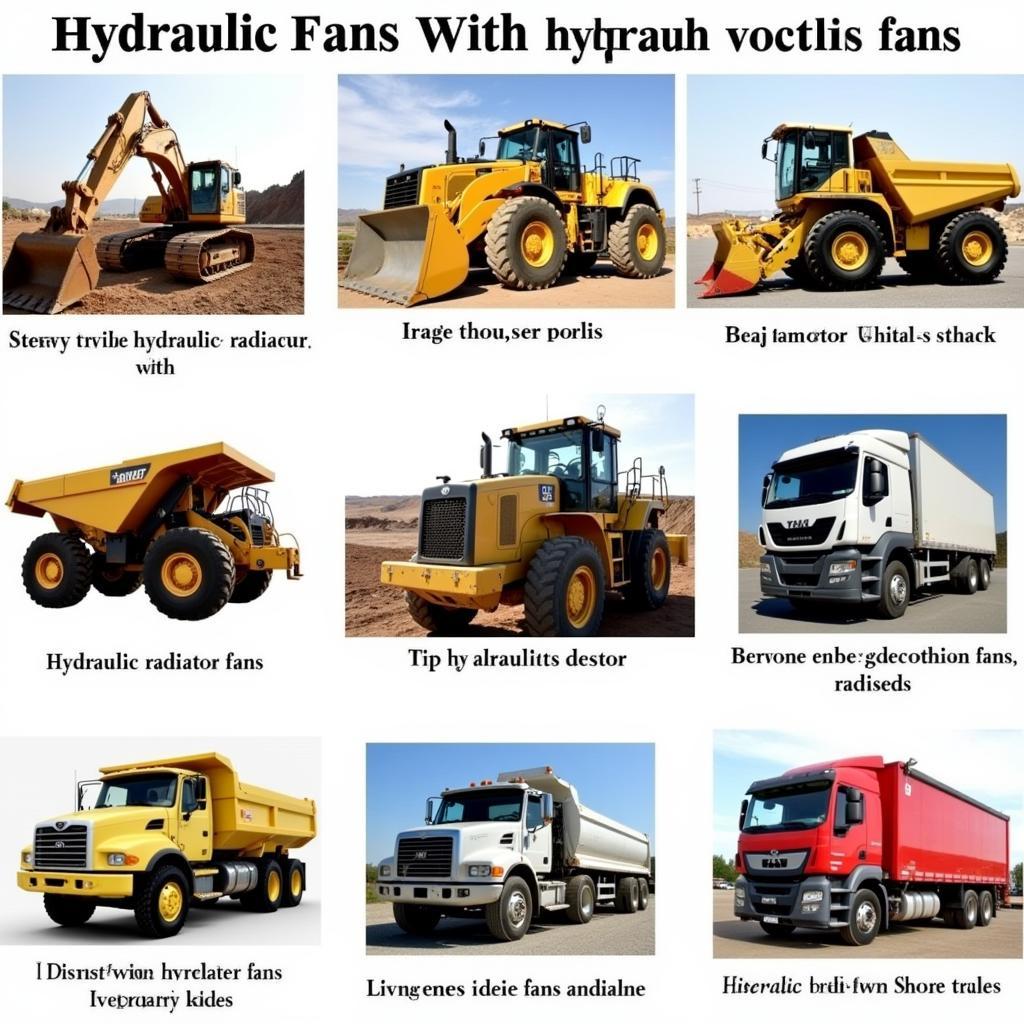A Hydraulic Radiator Fan is a crucial component of many vehicle cooling systems, particularly in heavy-duty applications. Unlike traditional engine-driven fans, which are mechanically connected to the engine, hydraulic radiator fans operate using fluid pressure, providing a more efficient and adaptable cooling solution for demanding environments.
How Hydraulic Radiator Fans Work
 Hydraulic Fan Operation Schematic
Hydraulic Fan Operation Schematic
Hydraulic radiator fans operate based on a closed-loop system where a hydraulic pump, often driven by the engine, pressurizes hydraulic fluid. This pressurized fluid is then directed by a control valve to a hydraulic motor, which is directly coupled to the fan blades. As the fluid flows through the hydraulic motor, it generates rotational force, causing the fan blades to spin and draw air through the radiator. The control valve plays a vital role in regulating the fan speed by adjusting the fluid flow rate to the motor, ensuring optimal cooling performance based on the engine’s temperature demands.
Advantages of Hydraulic Radiator Fans
 Advantages of Hydraulic Fans in Heavy-Duty Vehicles
Advantages of Hydraulic Fans in Heavy-Duty Vehicles
Compared to conventional engine-driven fans, hydraulic radiator fans offer several key advantages:
- Enhanced Fuel Efficiency: By decoupling the fan operation from the engine’s crankshaft, hydraulic fans eliminate the parasitic drag associated with mechanical fans, leading to notable improvements in fuel economy.
- Improved Cooling Capacity: The variable speed control of hydraulic fans allows for on-demand cooling, ensuring optimal engine temperature management even under heavy loads and extreme operating conditions.
- Reduced Engine Load: By transferring the cooling workload from the engine to the hydraulic system, these fans lessen the strain on the engine, potentially extending its lifespan and reducing maintenance requirements.
- Lower Noise Levels: Hydraulic fans generally operate quieter than their mechanical counterparts, contributing to a more comfortable driving experience and reduced noise pollution.
Applications of Hydraulic Radiator Fans
 Typical Applications of Hydraulic Radiator Fans
Typical Applications of Hydraulic Radiator Fans
Due to their efficiency and robust performance, hydraulic radiator fans find widespread use in:
- Heavy-duty trucks and buses
- Construction equipment
- Agricultural machinery
- Mining vehicles
- Emergency vehicles
Maintaining Hydraulic Radiator Fans
Proper maintenance is crucial for ensuring the longevity and optimal performance of a hydraulic radiator fan system. This includes:
- Regular fluid checks and replacements: Inspect the hydraulic fluid level and condition periodically, and replace it according to the manufacturer’s recommendations.
- Inspection of hoses and connections: Regularly examine the hydraulic hoses and connections for signs of wear, leaks, or damage, and replace any compromised components promptly.
- Control valve maintenance: Periodically inspect and clean the control valve to ensure proper fan speed regulation and prevent potential issues.
- Fan blade inspection: Visually inspect the fan blades for any signs of damage, such as cracks, bends, or debris buildup, and address any issues promptly.
Conclusion
Hydraulic radiator fans offer a highly efficient and adaptable cooling solution for demanding applications, particularly in heavy-duty vehicles and machinery. Their ability to operate independently of the engine speed, coupled with variable speed control, ensures optimal cooling performance while reducing fuel consumption and engine load. By understanding the workings, advantages, and maintenance requirements of hydraulic radiator fans, you can ensure your vehicles operate at peak efficiency and experience extended lifespans.


